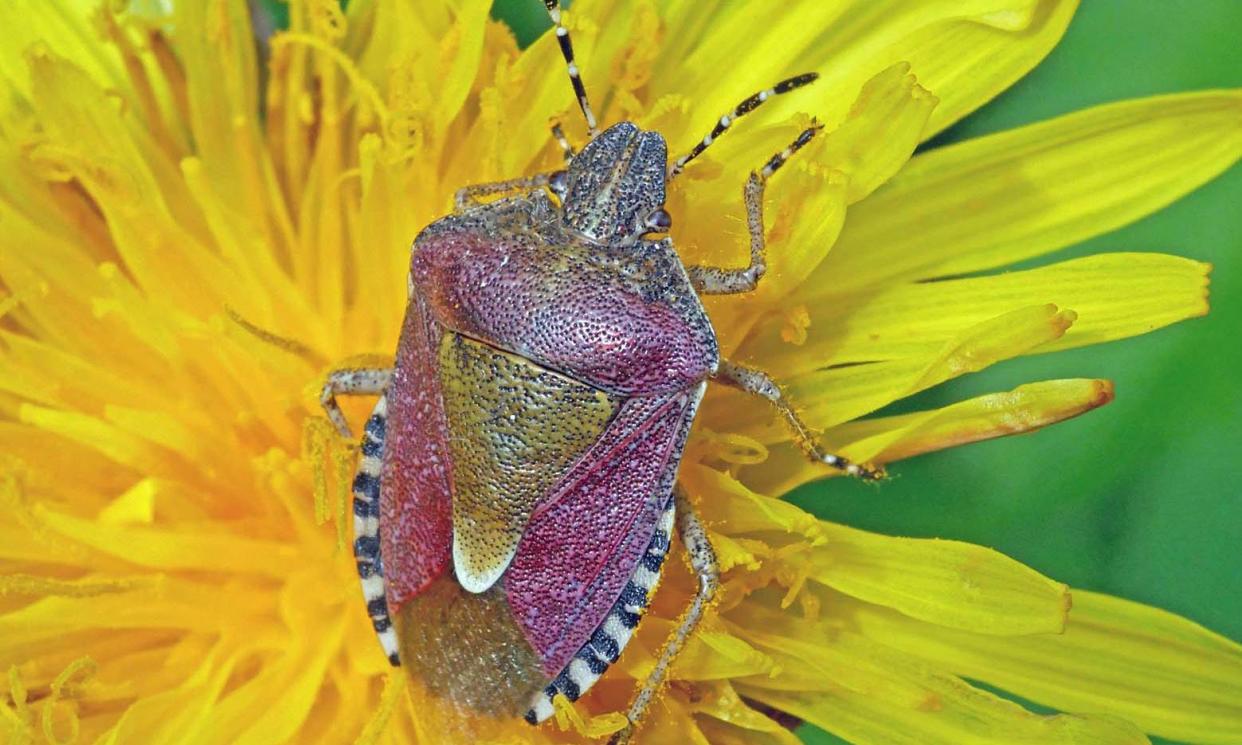Country diary: My garden continues to welcome climate change refugees and opportunists

After such a cold, wet March, it feels comforting to be gardening with the warmth of spring sunshine on my back. A shieldbug, coaxed from hibernation among last autumn’s fallen leaves and sunbathing on a dandelion, seems to be revelling in it too.
It’s a hairy shieldbug, Dolycoris baccarum, about the size of my smallest fingernail, clad in heraldic shield-shaped chitinous body armour, emblazoned in purple and bronze, with black and white banded antennae. A recent arrival from southern counties, it is currently expanding its range northwards, probably in response to climate change.
Hairy shieldbugs are well – perhaps too well – established in my garden here in the Pennine foothills. In 2019, I noticed the first solitary individual; by last summer there were scores of them, congregating to mate on mullein leaf rosettes, using their syringe-like mouthparts to suck sap from ripe raspberries.
I shook the dandelion, and the bug dropped into my collecting tube, waggling its legs in the air like an unhorsed knight in armour. Regaining composure, it produced two drops of greenish cloudy liquid, a last-resort chemical defence against predators. This pungent fluid gives shieldbugs another name: stink bugs. I unscrewed the tube cap and took a sniff, detecting a bouquet reminiscent of boiled cabbage with a whiff of stagnant water from a vase of decaying chrysanthemums. Unpleasant to a human nose, probably repulsive to enemies in the olfactory landscape inhabited by insects.
This little shieldbug is the latest invertebrate coloniser in a garden I’ve cultivated for almost four decades, during which it has become home to native speckled wood and holly blue butterflies that are extending their range northwards, and to exotic aliens that include Moroccan and Italian harvestman spiders, Asian harlequin ladybirds and European tree bumblebees.
We are all witnesses to climate change now: stay in one place for long enough, watch and get to know it well, and a succession of wildlife climate change refugees and opportunists will surely turn up. Someday, when I’m long gone, someone else will cultivate my little patch of ground, find their raspberries infested with hairy shieldbugs, and maybe assume that they’ve always been here. I’m penning this note so they’ll know when and how they arrived.
• Country diary is on Twitter at @gdncountrydiary


